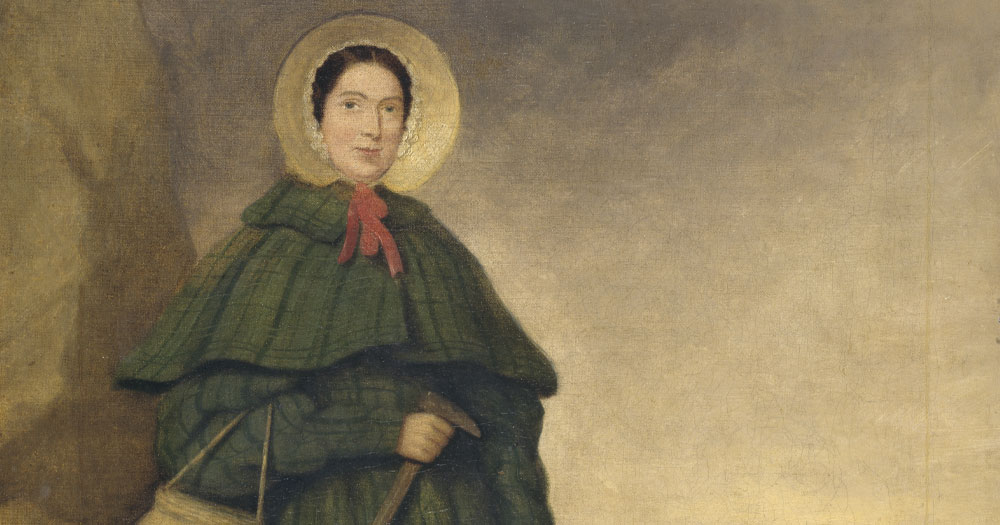A statue of Mary Anning, an early 19th-century British fossil hunter, palaeontologist, and rumoured lesbian (as portrayed by Kate Winslet in Ammonite) is to be erected in her hometown of Lyme Regis, Dorset after a campaign led by a young girl, Evie Swire, gathered large amounts of online support.
Kate Winslet, who plays Mary Anning in the 2020 film Ammonite, a romantic drama based on Anning’s alleged lesbian relationship with Charlotte Murchison, a British geologist, has pledged her support to the campaign.
Evie, who first heard about Mary Anning when she was 9 years-old, was shocked to discover that there was no tribute to Anning in her hometown.
Mary Anning was a pioneering scientist, whose work was often attributed to men in her field. Born into a working-class family in Lyme Regis, she began hunting for fossils along her home coastline, and discovered several ground-breaking fossils, including the 16-foot long skeleton of a sea creature ichthyosaurus, in 1811. Later, she went on to make other major discoveries including those of plesiosaurs and pterosaurs.
While Ammonite has garnered plenty of controversy over its portrayal of Anning as a lesbian, from claims of historical inaccuracy to full-blown homophobia, Ammonite’s director Francis Lee tweeted that: “After seeing queer history be routinely ‘straightened’ throughout culture, and given a historical figure where there is no evidence whatsoever of a heterosexual relationship, is it not permissible to view that person within another context…?”
In 2018, Evie and her mother, Anya Pearson, began an online campaign ‘Mary Anning Rocks’ to raise money for a statue of Anning to be erected; the campaign recently hit £70,000. The pledges so far mean that sculptor Denise Dutton can begin works on the permanent memorial to Anning.
Evie Swire, who hunts for fossils herself along the same coastline as her predecessor Mary Anning, believes in the importance of remembering women such as Anning, and says that: “She’s done all these amazing things and sadly has been lost in history.”
Certainly becoming “lost in history” is a fate that Mary Anning has in common with many LGBTQ+ historical figures. While there is no evidence that Anning was in fact a lesbian, in writing for the Guardian, Tori Herridge and Becky Wragg Sykes suggest that “getting your knickers in a twist over a lesbian storyline, and crying ‘historical inaccuracy’ on this count only holds water if you assume heterosexuality and/or celibacy for Anning until proven otherwise.”
Born in 1799, Anning was a pioneer in her field, her gender and social status prohibited her from being recognised for her ground-breaking work; enabling men in her field to take credit for her discoveries. Before she died at age 47, she wrote that: “The world has used me so unkindly, I fear it has made me suspicious of everyone.”
The statue, which will be erected along the coastline near where Anning was born, is set to be unveiled in May 2022, on the anniversary of Anning’s birthday, and will stand as a long-overdue celebration of her life’s work.
© 2021 GCN (Gay Community News). All rights reserved.
Support GCN
GCN is a free, vital resource for Ireland’s LGBTQ+ community since 1988.
GCN is a trading name of National LGBT Federation CLG, a registered charity - Charity Number: 20034580.
GCN relies on the generous support of the community and allies to sustain the crucial work that we do. Producing GCN is costly, and, in an industry which has been hugely impacted by rising costs, we need your support to help sustain and grow this vital resource.
Supporting GCN for as little as €1.99 per month will help us continue our work as Ireland’s free, independent LGBTQ+ media.
